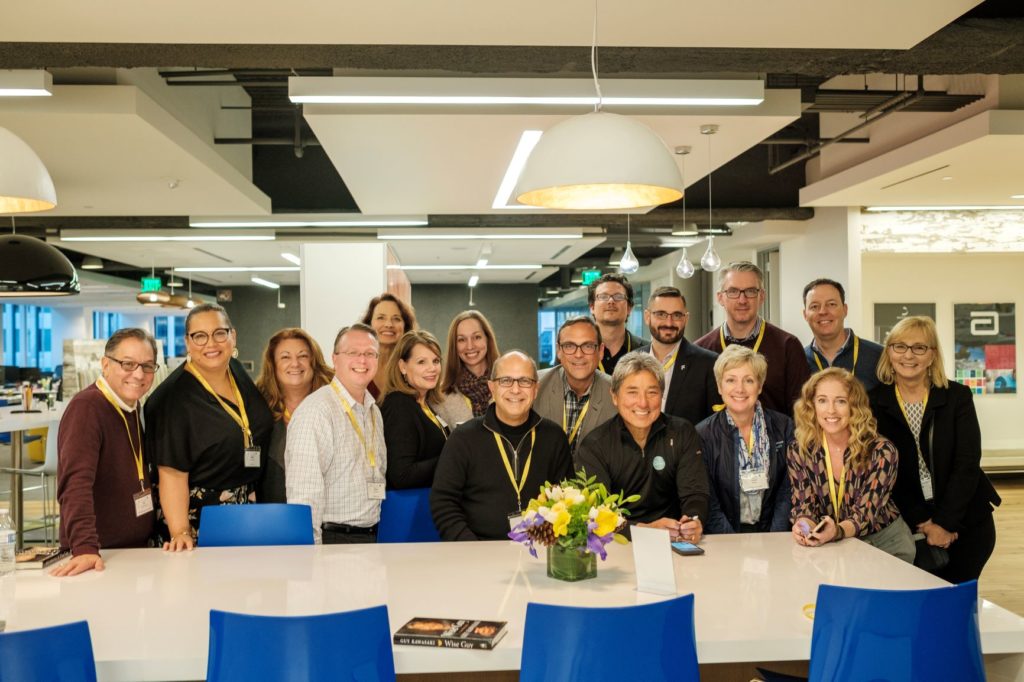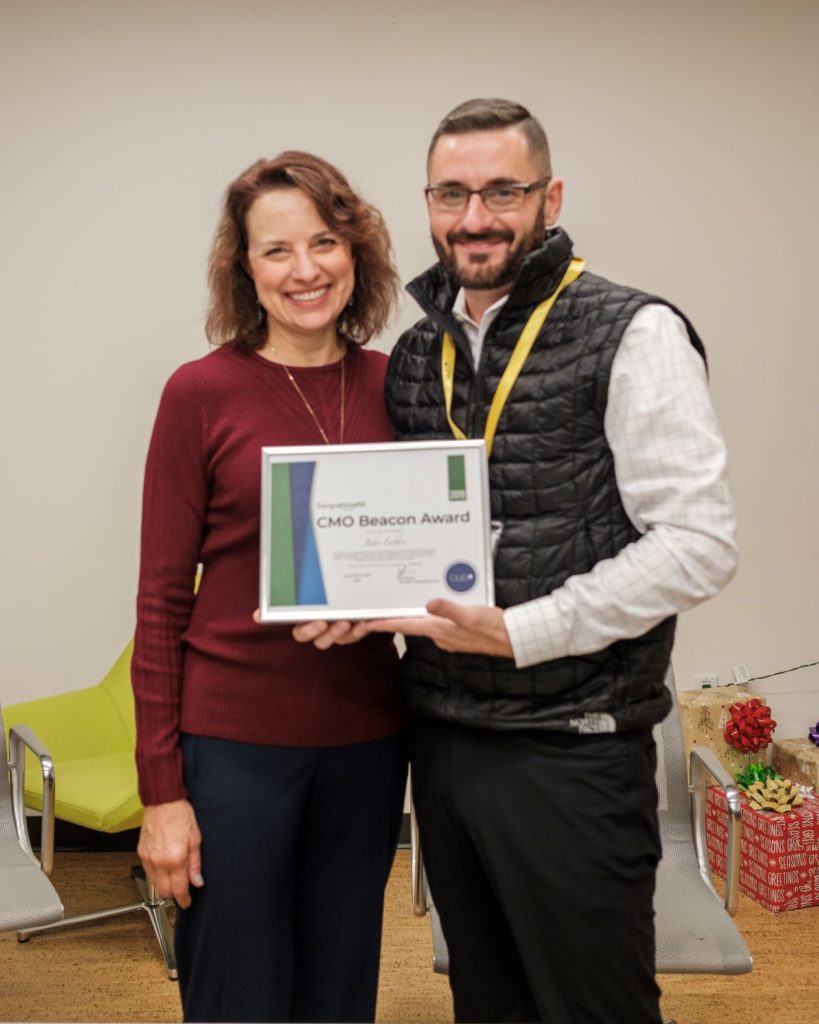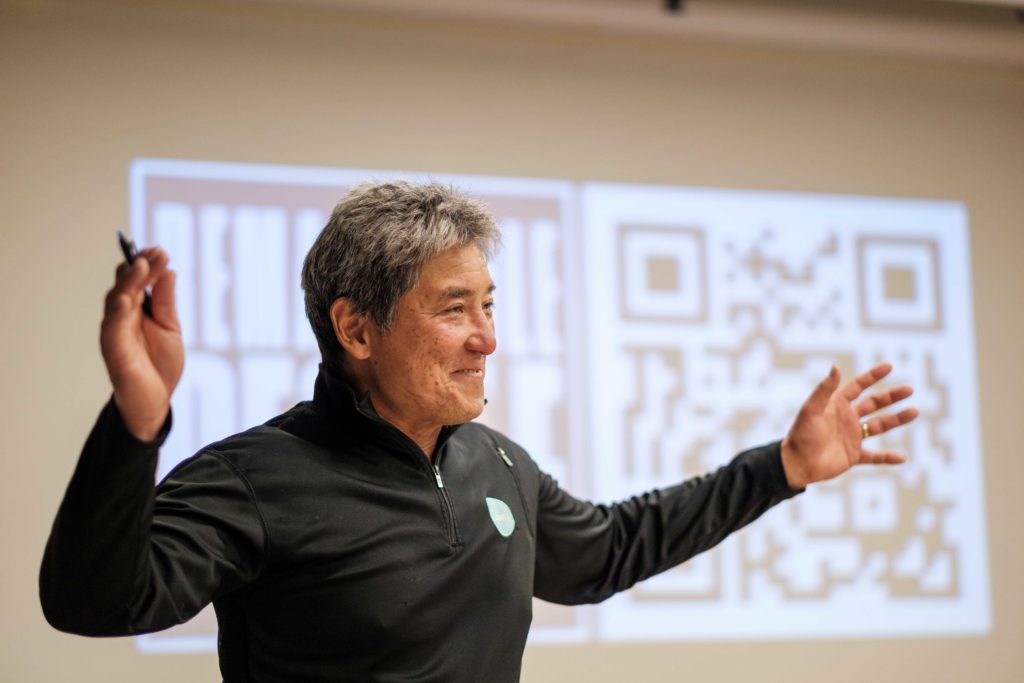Throughout the year, we help marketing leaders and their teams become more innovative and more valuable to their organizations. Our key learnings and collaborations culminate in the annual CMOs Leading Innovation Conference (CLIC). Our fifth confab, which we just hosted in San Francisco, did not disappoint.

C-Suite executives from Dallas, Denver, DC, and other dandy destinations gathered earlier this month to address a perennial concern: creating innovative marketing cultures.
Each year, I love sharing our key takeaways. In this intimate setting of 25-30 senior leaders, a lot of business opportunities emerge, and new collaborations unfold. I find it difficult to share all of the lessons and successes in just one post!

Our all-star lineup of special guests and speakers included:
- Guy Kawasaki, Canva.com evangelist, 15-time author and former Apple evangelist
- Elisabeth Charles, CMO of Rodan + Fields
- Chris Mahai, Founder of Aveus (a Medecision company)
- Jim Notarnicola, CMO of BRIX Holdings and former CMO of Blockbuster and 7-Eleven
- Katia Walsh, Head of AI and Strategy at Levi-Strauss
- Omar Ahmed, Principal at Altimeter Research (a Prophet Company)
- Jake Fabbri, CMO of Fonteva. He is the 2019 Winner of the CMO Beacon Award (pictured above)

(Photo courtesy of Chris Zegal)
Here are six key takeaways from CLIC ‘19:
- Everyone needs mentors to make innovation happen—especially less experienced leaders.
These days, I am seeing a growing number of marketers with 3-5 years’ experience being promoted to Marketing VP or CMO. They bring fresh perspective to the role; that’s true. Yet they also have a blind spot: They struggle to look for patterns from previous roles because they have limited experience. This means that building internal alliances and joining a trusted peer group — a “tribe of mentors,” as Tim Ferriss might call them–are no longer a luxury. They are essential strategies to help them advance their critical thinking and build a track record.
2. Failures can be your best teacher.
It’s easy to gather our teams and celebrate innovation success. Yet the true learning often happens from a failed innovation. Elisabeth Charles shared a Rodan + Fields promotion that fits that description and describes how Marketing missed their sales consultants’ expectations. The R + F marketing team experimented with a “gift set” promotion, which included a custom-branded eye pillow. Unfortunately, they had not field tested the product very extensively. They soon learned that the pillow design did not reflect the marquis brand that their skin care line represented. Rodan + Fields’ network of over 300,000 consultants vetoed the promotion, leaving behind a pile of unwanted merchandise.
3. Don’t waste too much time climbing walls; scale fences.
Omar Akhtar, a principal with Altimeter Group, guided us through an exercise to uncover innovation barriers. He helped us distinguish between walls and fences.
When a leader wants to cultivate an innovative marketing culture, they need to quickly distinguish between the two, and focus their resources and energy on scaling fences. Walls can suck the life out of an organization because they can typically require 2 or more years to scale (if ever). They also may be insurmountable. One example of a wall may be a founder-CEO who simply uses her company (and legacy offerings) as a personal ATM machine, and has no desire to take calculated risk with new marketing innovations.
While working at Vodafone, Katia Walsh encountered a fence. She was asked to build a team of over 500 data scientists, but had trouble filling those positions with external talent.
Walsh and her team set out to create an internal eight-week machine learning curriculum. Under her leadership, Vodafone created new career pathways and higher retention rates for their high potential employees.
4. Build smart incentive programs.
Sometimes it helps to start by learning how NOT to build incentive programs. Janusian thinking can cement ideas and important lessons quickly. Let me illustrate.
Stanford University’s Bob Sutton conducted an extensive case study to learn how Uber’s culture caused costly, long term damage to the brand. In 2016, it was reported that employees were paid bonuses based on the company’s ability to exceed wild growth targets. (You can hear Safi Bahcall’s summation of the Uber incentive systems dysfunction in his podcast with Tim Ferriss). In addition, they implemented a stack ranking system, which was similar to GE’s in the 1980s.
On the surface, these pay and promotion strategies may seem standard if not mainstream. They backfired. The strategy motivated team members to divert their attention away from the core ride-hailing business. They wanted to be the captain of their own speedboat—and hopefully discover the next Uber unicorn.
Over time, customer information became distributed across four disparate platforms. It just wasn’t as sexy to focus on consolidating systems. Teams wanted to find the next Uber Eats. This contributed to what Sutton refers to as “needing to repay technical and organizational debt.” (Download the full Uber case study and video interviews here).
5. Invest in evangelists, not influencers.
Guy Kawasaki helped us make distinctions between the two forms of word of mouth. We live in a time where a soupcon of distrust and deceit now taint the influencer marketplace. The Wall Street Journal reported a decline in the power of influencer marketing last October. Paid posts and brand ambassadors may have had their time in the sun, but nothing compares to an unpaid evangelist singing your praises from the mountaintop. Salesforce’s 2+ million strong Trailblazer community models the evangelist approach quite brilliantly.
6. Look in unexpected places for inspiration.
It’s easy to think you need to hire a pedigreed innovation lab guru to stoke your marketing innovation fires. Yet that’s not the case.
First, you need to be a person of interest; a person YOU would like to spend time meeting. I get my biggest inspiration when I open water swim in pristine waters around the world, or try a new hobby such as home decorating. This one is a newfound passion since I purchased my own home in September.
Second, surround yourself with peers who are as passionate about innovation as you are. Akhtar reminds us that “the answers to our biggest business challenges don’t come from gurus, thought leaders or the Harvard Business Review. They come from other people. And in the digital age it’s easier than ever to connect with them and find the answers you need.”
You’ll meet new peers at our next CLIC gathering. It may be the holiday gift you always wanted.

Interested in CLIC ’20? Join the know ahead list now. Click here. (It’s SPAM-free).
Copyright 2019, Lisa Nirell. All rights reserved.
